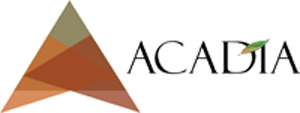Successful sales forecasting results in increased revenue streams. We sat down with our resident sales expert, Michael Murphy, for a high level discussion into what makes sales forecasting successful.
What is a sales cycle and how does it factor into sales forecasting?A sales cycle is the detailed journey of a prospect becoming a client. It's tailored to each company, work product, and client, so sales cycles are different from company to company. Think about what steps and actions your leads and prospects take and the proper amount of time they need to do so. While one purchase from one sales cycle doesn't mean anything, collectively analyzing this data can help you uncover typical behaviors and purchasing patterns. Sales forecasting uses historical sales cycle data to predict and prepare for the future.
How long is a typical B2B sales cycle?
A typical B2B sales cycle is wide and varied but most often, I hear from my clients that three to twelve months is typical, sometimes longer. Usually the more expensive the product or service, the longer the sales cycle due to the complexity of the decision making process.
Why is sales forecasting important to an overall business strategy?
Sales forecasting gives your business leadership team the foresight to better plan your operation, staffing and financial investments. It allows you and your team to understand what will occur before something happens, not after. Nothing worse than looking through the rear view mirror to see what you did.
How is sales forecasting beneficial for price negotiations?
You and your leadership team can confidently go into price negotiations because you have sales forecasting data to support your decisions. Look at past deals that are similar and price accordingly, helping you to avoid over or under charging. Additionally, if you are confident in your sales forecast and you have achieved your goals, it will allow you to price your services and potentially earning a premium to work with you. This will allow you to accommodate the need for additional capacity to facilitate a new customer into an already busy production schedule.
Is sales forecasting useful for other departments?
Sales forecasting data benefits Sales, Operations and Leadership, helping them to plan for the future. Sales teams will know, accurately, how much more business is needed to reach targets and the level of effort needed to do so. Operations can plan capacity based on an accurate sales forecast. Leadership can make well informed decisions on business strategy and investment if they are confident in the company sales forecast.
What are the main benefits of sales forecasting?
Sales forecasting creates a reliable revenue stream(s) for your business, then you can prepare and plan for optimal success. For example, if you know sales naturally peak in November and December due to year end demands and you know where you are from a sales target perspective, you can accurately predict how much activity is required to achieve your sales targets.
How do you prepare to start sales forecasting?
First, you must detail sales cycles of ideal clients. Review first year sale data of past clients and your revenue from last year to determine a baseline. Brainstorm SMART goals for how much you'd like to increase in revenue, and detail the steps you'll need to take in order to get there. These activities include not only your sales history but you must work it back all the way to lead generation and marketing efforts.
What are common sales forecasting mistakes to avoid?
Common sales forecasting mistakes are basing projections on gut feelings, misaligned sales cycles, and pursuing the wrong market/customer. Successful and accurate sales forecasting data is based on past factual data, not feelings. Sales forecasting is only accurate when your sales cycles are accurate and you fully understand conversion data such as prospect to close rate, lead to prospect rate, average first time sales engagement values and what business you can count on returning from the previous year.
How do you measure sales forecasting success?
The quickest way to determine sales forecasting success is to take a look at financial statements. Did revenue increase the way you projected? If yes, forecasting was accurate. If no, it's time to revisit your goals.
How do you get the most accurate sales forecasting predictions?
Measuring sales opportunity progress within sales cycles consistently, based on the same factors will help with accuracy. As noted earlier until you fully understand conversion data such as prospect to close rate, lead to prospect rate, average first time sales engagement values and what business you can count on returning from the previous year. There are many more metrics you can measure and use in your forecasting model. Think of things like calls made to secure a sales appointment, lead sources and which ones provide the most value. This will dictate where to spend your time and money.
What methods, tools, or software do you suggest for sales forecasting?
I suggest using the sales tools in your Customer Relationship Management system (CRM), or one that integrates with your sales and marketing tools. There are many CRMs on the market and one size does not fit all. Determining what is correct for your company requires an introspective approach. We use an assess, align and refine methodology.
Should you re-evaluate a sales forecasting strategy?
Make sure you're collecting data on a continual basis. Because sales forecasting is based on past data. Data tells the story and you must be measuring the right data points in your systems. As your sales process matures, so will your forecasting. Then use your CRM to generate reports like monthly or quarterly financial statements and compare. Monitor and compare on a monthly basis. Reevaluate sales forecasting strategies each business year.
Have you evaluated your sales forecasting strategy and system for 2021? We're in Q4 of 2020, so it's time to start thinking about 2021. Contact us to learn how we can help perfect your sales cycles for accurate 2021 forecasting.






Comments